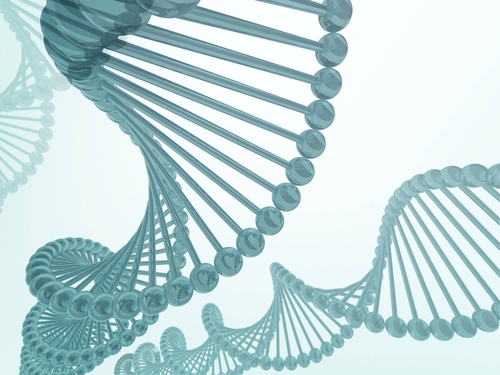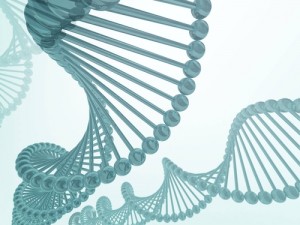Researchers Propose Link Between Degenerative Muscle And Brain Diseases Like Muscular Dystrophy And Mysterious ‘Circular RNA’

 Research on a newly discovered type of RNA molecule could help eventual treatment of degenerative muscle and brain diseases such as the most common form of muscular dystrophy that starts in adulthood. Human genetic information — the “blueprint” of our constitution and that of and almost all other living organisms — is stored in deoxyribonucleic acid (DNA), tiny strands of nucleic acid that contain the instruction set for our bodies’ functions.
Research on a newly discovered type of RNA molecule could help eventual treatment of degenerative muscle and brain diseases such as the most common form of muscular dystrophy that starts in adulthood. Human genetic information — the “blueprint” of our constitution and that of and almost all other living organisms — is stored in deoxyribonucleic acid (DNA), tiny strands of nucleic acid that contain the instruction set for our bodies’ functions.
To express this genetic data, our DNA is copied into Ribonucleic acid (RNA), unique polymeric molecules with long chains of nucleotides containing a nitrogenous base, a ribose sugar, and a phosphate that are essential to protein synthesis and implicated in a variety of biological roles in coding, decoding, regulation, and expression of genes. RNA molecules, translate genetic instructions into proteins that perform tasks in our cells. In addition to known RNAs, circRNA unlike all other known RNAs, has a circular molecule (ergo: “circ”). These circular RNA molecules are abundant, yet little has been known about how they are produced, and next to nothing about the role they play in disease.
However, a research team led by Dr. Sebastian Kadener of the Biological Chemistry Department, Silberman Institute of Life Sciences, at the Hebrew University of Jerusalem, in collaboration with the lab of Prof. Nikolaus Rajewsky at the Max Dellbruck Institute in Berlin, has discovered how circRNAs are produced.
In an article published in the prestigious journal Molecular Cell, Dr. Kadener, Prof. Rajewsky, and their colleagues report that they have found circRNAs not only compete with normal RNAs, but the body actually produces them at the expense of normal RNA. Consequently, the mere fact of circRNAs’ production has an enormous impact on how our genes are expressed, which affects how our bodies develop and function.
The researchers have also demonstrated that circular RNA molecules are produced in the brain, in many cases from genes with important functions, strongly suggesting that circRNAs play an important role in brain function, and likely in brain disease.
In addition, the scientists have identified the protein “muscleblind” as a factor involved in circRNA biogenesis, and showed that muscleblind can enhance and regulate the production of a subset of circular RNAs.
[adrotate group=”3″]
Importantly, defects in muscleblind function are known to cause a severe degenerative disease called myotonic dystrophy. Characterized by progressive muscle wasting and weakness, this is the most common form of adult onset muscular dystrophy. The researchers suggest that when considered together, the important role played by muscleblind in regulating circRNAs, combined with these molecules’ abundance in the brain, suggests that circRNAs might be involved in development of myotonic dystrophy.
 According to Dr. Kadener: “This research is significant from several perspectives. By mapping how circRNAs are produced, it helps advance our understanding of general molecular biology. In addition, it might be strongly relevant for understanding and eventually treating degenerative diseases both in muscle and the brain.”
According to Dr. Kadener: “This research is significant from several perspectives. By mapping how circRNAs are produced, it helps advance our understanding of general molecular biology. In addition, it might be strongly relevant for understanding and eventually treating degenerative diseases both in muscle and the brain.”
Coauthors of the Molecular Cell article with Dr. Kadener and Prof. Rajewski are: Dr. Reut Ashwal-Fluss, Mr. Nagarjuna Reddy Pamadurti, Dr. Osnat Bartok, Mrs. Mor Hanan and Naveh Evantal (Dr. Kadener’s lab); and Markus Meyer, Andranik Ivanov and Sebastian Meczmack (Prof. Rajewsky’s lab). In the paper, entitled “circRNA Biogenesis Competes with Pre-mRNA Splicing” (Molecular Cell, Cell, Volume 159, Issue 1, 25 September 2014, Pages 13-14; DOI: 10.1016/j.molcel.2014.08.019), they report that while circRNAs are widely expressed noncoding RNAs, their biogenesis and possible functions are poorly understood. In their research, by studying circRNAs that the scientists identified in neuronal tissues, they provide evidence that animal circRNAs are generated cotranscriptionally and that their production rate is mainly determined by intronic sequences.
The researchers demonstrate that circularization and splicing mechanisms compete against each other, and are tissue specific and conserved in animals. They also observed that the second exon of the splicing factor muscleblind (MBL/MBNL1) is circularized in flies and humans, and that this circRNA (circMbl) and its flanking introns contain conserved muscleblind binding sites, which are strongly and specifically bound by MBL.
The coauthors observe that modulation of MBL levels strongly affects circMbl biosynthesis, and this effect is dependent on the MBL binding sites. Taken together, their data suggest circRNAs can function in gene regulation by competing with linear splicing, and additionally they identified muscleblind as a factor involved in circRNA biogenesis.
Dr. Kadener’s group was supported by the European Research Council (ERC), a Human Frontiers Science Career (HFSP) development award, and the Israel Science Foundation.
Photo Credit: Marco Plassio
The Hebrew University of Jerusalem, founded in 1918 and opened officially in 1925, is Israel’s premier university as well as its leading research institution. It is ranked internationally among the 100 leading universities in the world and first among Israeli universities.
Sources:
The Hebrew University of Jerusalem
Max Dellbruck Institute, Berlin, Germany
Molecular Cell
circrna.org
Image Credits:
The Hebrew University of Jerusalem
Max Dellbruck Institute
Marco Plassio, Wikimedia Commons






